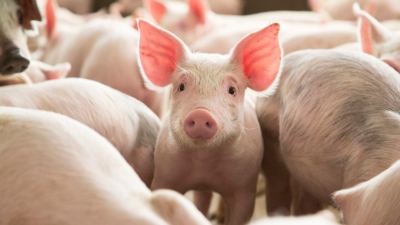Traceability: What does it mean to the consumer?

Today’s consumers expect very specific product information, pictures, customer reviews and ratings, all accessible within a few taps on their smartphone. More recently, they’ve come to expect the same immediacy and transparency when it comes to knowing where their food comes from, who produced it and where, as well as what went into production.
What’s in my food and is it good for me?
In recent years, many consumers have become generally uncertain about the safety and quality of their food, and their risk perception differs largely from that of those within the agriculture and food industries. Consumers sometimes display misguided and inconsistent behavior with respect to food safety and risk information. But, with widespread coverage of foodborne illness outbreaks from national chain restaurants and an abundance of seemingly credible misinformation, it’s easy to empathize with consumers and their lacking confidence in food safety and quality.
The more consumers feel they know about food production practices, the greater the level of trust consumers have in the food production practices. In a survey conducted by Sullivan Higdon & Sink Advertising and Marketing Agency, 69% of consumers reported that that they think it’s important to know how their food was produced.1
67% want more information on the meat packaging.
60% want to know if the animal was given growth hormones.
42% want to know what medicine the animal was given during its lifetime.
34% want to know what the animal’s living conditions were like.
34% want to know where the animal was raised.1
Unfortunately, less than two-thirds (63%) of global consumers trust the information they receive on food packaging.2 Consumers view food with a skeptical eye. In the food production industry, product quality, safety, nutritional value and consumer trust are vitally important to the success of the producer.
In the wake of this consumer doubt lies an opportunity for producers to be more transparent about the contents and source of the food they put on the market.
What are the solutions for rebuilding consumer confidence in food safety?
- As industry professionals, it’s our responsibility to help consumers establish food system connections and help bridge the gap between lay and expert opinions regarding food risks, including traceability. Food producers should be the leading voice for food, giving consumers the information they crave, straight from a credible source—the person who’s growing the food to bring to their table.
- Actively show commitment to quality, safety and traceability. It is vitally important to show your consumers that you are committed to providing them food free from bacteria that causes foodborne illness and free from contaminants like mycotoxins, heavy metals, dioxins and PCBs.
- Be proactive with your on-farm practices to create a healthier animal and more nutritious crops, and in turn, a healthier consumer product. In food production, quality is as much about safety as it is about nutritional value.
Bottom line: Most consumers view food quality, safety and traceability as interlinked concepts.
Reputable Resources:
- IFT’s Global Food Traceability Center: http://www.ift.org/gftc.aspx
- Learn more about traceability as a consumer: http://globalfoodsafetyresource.com/food-safety-risk-management/food-traceability
- Of interest to those, especially producers, who’d like to read more on the topic: http://www.foodsafetynews.com/2013/05/putting-food-traceability-at-consumers-fingertips/#.VwKRYPkrKM8
- EU Traceability Resource (also a great example of what will likely become common in other regions as well): http://ec.europa.eu/food/safety/docs/gfl_req_factsheet_traceability_2007_en.pdf
References:
1.)Building Trust in What We Eat: Consumers’ knowledge of and trust in food production and how food marketers can improve it.” Sullivan Higdon & Sink Advertising and Marketing Agency, 2012
2.)Nielsen Global Health and Wellness Survey 2014















